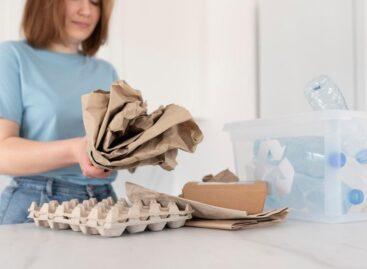TV Eaters – IPTV on the Rise
In Hungary leisure time at home has become synonymous with television viewing in the last 25-30 years. Watching TV is a typically passive activity for which content providers found no antidote for a long time. Attempts to involve the viewers occasionally worked for certain programmes, e.g. through voting by text message. In the last three years, however, IPTV, a system which delivers television services via the Internet, has experienced dynamic growth. Viewers who used to switch channels only have rapidly learnt to like IPTV services, including video on demand, recordable or time-shifted television and the electronic programme guide, more and more actively shaping their television content consumption, reveals the GKIeNET–Telekom Report on the Internet Economy.
Half of our free time is spent watching TV
Television plays a primary role in how the Hungarian population spends their leisure time at home. According to GKIeNET’s data there is at least one television set in each household: 50% of households had one TV set, 35% had two, 11% had three, and 3% had four or more at the end of the first quarter of 2012.
The average Hungarian viewer spends over 1,5 hours of their leisure time watching TV on weekdays and even more, 2,5 hours during the weekend. In the majority of cases they watch TV in the company of others, spending nearly half of their available free time in the front of the television.
Entertainment content preferred
In terms of programme structure, 92% of TV owners over 14 years old watch news programmes at least once a week, a somewhat smaller percentage, 70% watch popular science shows and 33% choose political debates. Entertainment programmes, in particular shows, are watched by 65% of the population. Sport programmes account for 49% and music programmes for 45% of the viewers.
Viewers spend the highest amount of time (almost 7 hours per week) watching movies, 4 hours viewing TV series and 3 and a half hours on news programmes. Popular science shows account for 2 and a half hours of weekly television, while entertainment shows take up 1,9, sports programmes 1,8 and music programmes 1,3 hours of the viewers’ time. In the past year no significant change occurred in viewership habits as regards the time allocated to different programme types. Television provides relaxation and entertainment to viewers whereas the Internet is mainly used for searching for information.
Active and passive television viewing
Viewing television can be an active or passive activity depending on the way we watch TV. In active television viewing, the viewers’ attention is focused on the TV, making it their primary activity with a strong absorption of content. In passive TV viewing, television is just a background distraction to another activity therefore the viewers’ attention is fixed on the TV only occasionally. There is no or only a partial absorption of content, or it occurs simultaneously with the use of other devices, such as computers or, recently, smart phones and tablets which are used to consume other content. According to GKIeNET’s survey, the ratio of active and passive television viewing in the whole population is 70% to 30% irrespective of the day of the week (weekend or weekday) but the share of passive television viewers continues to grow. In the under 18 age group and the age group of 30-39 years this share already rose to 50-50% by 2012 thanks to the increasing role of the Internet and the personalized content it offers. (GKIeNET, 2012).
Interactive television involves viewers
The consumption of television content is massively influenced by the expansion of smart devices and the growing role of the Internet in households. The purpose of the fight is to hold the viewers’ attention. The integration of the Internet and television has produced a substantial change in content consumption as the use of interactive television services enables viewers to stop being a passive observer of content. From time to time, when they wish, they can actively participate in their own entertainment, signalling to service providers and programme producers which programmes they are interested in at a given moment. In addition to earlier „recipient” television viewing, interaction and viewer involvement have emerged, providing consumers with the option of managing and controlling content.
The rise of IPTV brings the Internet and the digital television platform closer and intensifies the ongoing competition between television and Internet content. By combining television and the Internet, IPTV offers viewers a new experience which will likely boost the use of interactivity (video-on-demand, play-back TV) in television in the future.
Extensive IPTV growth
In Hungary, the traditional television audience has just started to show a stronger interest in the new service. This trend, however, will accelerate as consumers become familiar with the capabilities and benefits of the new technology. Due to intensive infrastructural developments IPTV has already gained momentum with subscribers surpassing 276 ,000 by the end of 2011 in Hungary. Moreover, the growth of IPTV services is an exciting trend because it has the potential to stop the rising share of passive television viewers through its growing number of interactive television services.
The survey conducted by GKIeNET in spring 2012 found that mainly young people and less „mature” family groups, especially those aged 20-39 years and under 18, show a keen interest in interactive television, in particular in IPTV. Based on economic activity, active earners and students show an extra interest in the service as well as viewers who consider television a less important part of their life.
The direction we are taking
For its consumers, IPTV chiefly offers the experience of television uncontrolled by broadcasters. Interactivity in television conveys the experience of freedom and independence to consumers, giving it an extra edge over traditional television.
Thanks to its multitude of value added features and the slow but steady change of consumer content consumption habits, IPTV faces as brilliant a future as its „basis”, broad-band Internet did in the early 2000s when users first enjoyed the thrill of fast, unlimited content consumption compared to dial-up Internet.
GKIeNET – Telekom
Related news
Related news
Fidelity Kitekintés 2026: Ne becsüljük alá az inflációt!
🎧 Hallgasd a cikket: Lejátszás Szünet Folytatás Leállítás Nyelv: Auto…
Read more >Company Trend 2025 – domestic businesses under strong pressure, in a negative trend
🎧 Hallgasd a cikket: Lejátszás Szünet Folytatás Leállítás Nyelv: Auto…
Read more >Plastic packaging waste in the EU: 35.3kg/capita
🎧 Hallgasd a cikket: Lejátszás Szünet Folytatás Leállítás Nyelv: Auto…
Read more >




